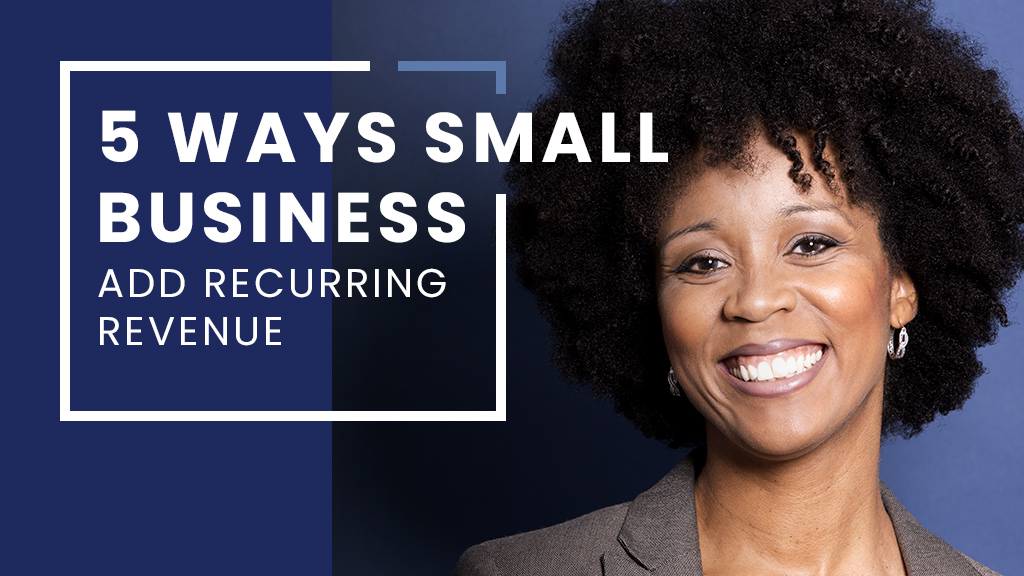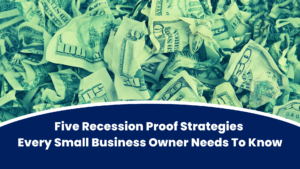Take an in-depth look at what three small businesses did to pivot their business models from transactional to lucrative recurring revenue models.
By Kim Folsom
This is Part 3 of our series on adding different revenue streams to your small business. Today I’m giving you some real-world examples of how small business owners pivoted from transactional to recurring revenues. See Part 1 and Part 2 for more ways to increase your revenue.
Recurring revenues like subscriptions, usage models, and service contracts can really be game changers for your small business.
They can take out of the daily scramble to get more customers and let you plan better for future growth. Consistent, recurring revenues can help you enter new markets, defeat competitors, and establish a lifetime value from existing customers that will give you more control of your business. In the end, recurring revenues lead to greater profits and greater growth over a longer period of time.
Recently, I spoke with three small business leaders who have pivoted from transactional to recurring revenue models. Today I’ll discuss what they did to generate these new revenues. I hope it’ll provide some inspiration for how you can do it, too.
Focus on your customer’s needs
Elain Swann, Founder of The Swann School of Protocol, created seven different new streams of revenue for a business that originally was reliant on her making appearances as a speaker, teacher, and business etiquette coach. Obviously, that was not scalable. But she was able to clone herself. Well, not literally, but she did create a franchise model with a licensing and training program to certify others to launch their own Swann School. Today, there are over 20 independently owned and operated Swann Schools in the U.S. that help people with the basic elements of communication and etiquette for a business environment. All the trainers (the clones) need to get certified, driving recurring revenue straight back to the parent company.
During the COVID-19 pandemic, she also pivoted to online training, which led to another recurring revenue stream altogether.
How did she get the ideas for these additional revenue streams? She listened to her customers.
“I hit the wall as a solo entrepreneur,” she said. “There was no way to make more money.” But her customers asked the types of questions that led to the new offerings: Is there a curriculum to purchase? Could she mentor them? Could she come to their city to give a workshop? She couldn’t do it all personally, but she created a system that could.
Later, she looked at all of Swann’s offerings and asked which of them were transactional that could be converted to a subscription. She also zeroed in on what customers really — really — needed her services for and found a lucrative niche with companies that are required to get the kind of training she offers due to the government contracts they procure.
“It’s vital to understand your customers’ pain points,” she said. “Their needs may shift as time goes on, so check with them on a regular basis. Ask questions. Hear from them. Be really in tune with what works for them.”
Caitlin Bigelow, the Co-founder and CEO of Maxable, echoed those thoughts. Her company helps homeowners interested in building ADUs (Accessory Dwelling Units, i.e., granny flats) on their property.
“We had over 3000 conversations with homeowners who wanted to build ADUs,” she said. She learned the problems her customers were having with regulatory constraints and legal compliance. There was definitely some trial and error, she said, but “we got to understand the client and industry so well that we came up with solutions people were looking for.”
Now they have a million views on their YouTube channel, 20,000–30,000 organic visitors to their website, and revenue expected to jump from $700,000 to $1.3 million this year.
Form partnerships with revenue sharing opportunities
Bigelow said the key to going from transactional to recurring revenue was to tap into partnerships with service providers like general contractors, lenders, and designers. Pairing homeowners with the experts they needed proved to be the secret sauce that generated regular, monthly income.
For Eric Murcia, the President of Pit Crew IT Services, forming partnerships was something that never even crossed his mind in the early stages of his business.
“We had blinders on,” he said. “We were too stuck on who we thought we were and what we thought we did to step out of our comfort zone.”
He said they used to refer internet service providers (ISPs) to their clients for free. It didn’t even occur to him that he was giving up a recurring monthly revenue stream that ISPs would pay for regular referrals.
“It was a free service we were offering from the inception,” he said. “We missed out on hundreds of thousands of dollars because we didn’t even know it existed.”
Help clients manage their budget
In fact, when Pit Crew IT started its business, contractual or subscription IT services didn’t even exist. Customers bought the services they needed and then didn’t call them again until something broke.
That wasn’t good for Pit Crew or their customers. Pit Crew couldn’t predict their revenue, and customers were unhappy when all of a sudden one lost server or a viral infection could cost them up to $15,000.
The solution was a subscription service that allowed Pit Crew to keep on top of things, monitor the IT infrastructure, provide excellent service, and avoid some of the breakage their clients would experience — all the while generating, steady recurring revenue that helped them plan and build for the future.
You can’t underestimate the value you can provide when you help clients manage their budget risk and the fluctuations of potentially big expenses. Clients will enjoy the consistency and convenience of the regular service you provide them. You’ll enjoy the regular revenue. And best of all, your relationship with your clients will grow deeper so you can continue to discover new or additional services they need.
“It’s easier and cheaper to keep a client than to find new ones,” Murcia said. “We look at our existing book of business all the time to see where we can go deeper and get further entrenched with our clients.”
Go after the low hanging fruit
When it comes to navigating turbulent business times like we’re in now, coming up with products and services that are easier to buy just might keep you in business. Swann called it “parking lot money” — the money that customers won’t miss. It comes out of their bank accounts or credit cards regularly and won’t make or break them.
Now might not be the time to introduce a brand new, high-priced offering. But add-on services that may be a no-brainer for you clients could provide a boost to your recurring revenue.
“The dollar amount you select has to be easy on their pocket or balance sheet so you’re not the first one they cross off their list when their budget gets tight,” Swann said.
Overwhelm your customers with value
When you’re creating a subscription product or a recurring service contract, you want to overwhelm your customers with value. Throw in the proverbial kitchen sink. Make the purchase decision so easy that your customer will feel like it’s a complete no-brainer, like they’d be foolish to pass it up.
“They have to feel like the value they are getting is worth way more than what they’re paying, like if they lost this service they wouldn’t be able to continue,” Swann said.
In the end, it’s all about your customers or clients, and discovering new ways to serve their needs. When in doubt, focus on them. Let them lead you to the new streams of revenue that will become the lifeblood of your business. Read Part 1 and Part 2 of this series for more.
Kim Folsom is the founder and CEO of Founders First Capital Partners, which has helped accelerate the success of hundreds of small, service-based, business-to-business companies since 2015. Visit our website to learn more.




